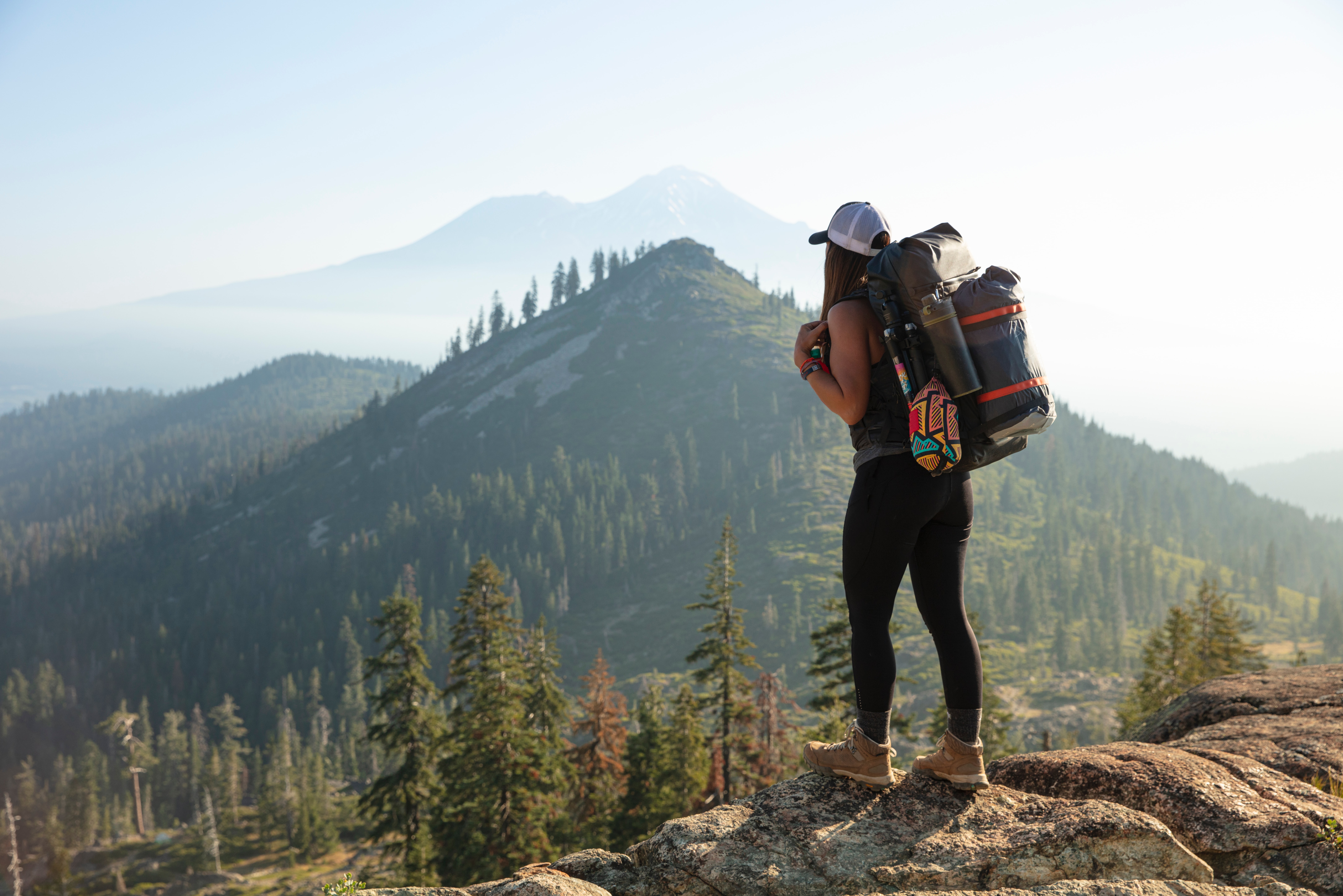Although there are benefits to wearing a base layer in the summer, they are not necessary to wear while hiking like they are in the winter. It is up to you if you want to wear a base layer in the summer or not, but if you are considering it, you should know how to pick a base layer, how to layer your clothing for hot weather, and the benefits of summer base layers.
What are Base Layers?
A base layer is the layer of clothing closest to the skin. They can serve different purposes depending on the material and type of clothing you use.
Heavier base layers, usually called thermals, are a thicker and are great for staying warm in colder weather.
There are also base layers for warmer weather or intense physical activities that keep you dry from sweat and other moisture. They are often thin, lightweight, and can retain heat if you need them to, but typically summer base layers are designed to keep your skin cool.
You can also wear compression shorts or socks as a base layer. These can keep your skin covered and dry so you can prevent chafing.
How Can A Base Layer Keep You Cool?
While a base layer will not technically cool your body down, your body will feel cooler, and you will be more comfortable with a base layer in the summer.
First, base layers will help you wick away sweat. If you know you will be sweating a lot on your hike, choosing a good base material that will help your skin and body feel cool.
Even if you do not want a base layer to cover all of your skin when you hike, you can choose short sleeve layers. For example, a t-shirt base layer will keep your armpits dry from sweat, but you can still have your arms free for air.
Furthermore, a base layer can help protect your skin from the sun, and in turn, keep you cooler. For longer hikes or outdoor outings, it’s important to keep yourself from getting sunburned.
Not only does a sunburn increase the temperature of your skin, but the heat from the sun, in general, will increase your body temperature. If you have a base layer covering your skin, specifically a light-colored base layer, the clothing will absorb some of the heat from the sun and not your body, helping you feel cooler.
What is the best layering for hot weather?
If you do want to wear base layers in the summer, you need to be strategic with how you layer them.
The most important thing to remember when layering in hot weather is that you will be adding or removing layers throughout the day. When you start your hike in the morning, the weather will be cool, so you will have at least one layer on over your base layer.
You will be taking layers off as the weather warms up, and you want to have your bottom layers be your coolest. Then, as the sun goes down, you can add layers back onto your body in the same order that you had them on to start the day.
Your base layer will be the lightest and tightest, and as you add more layers, they can get looser. Wearing loose clothes in hot weather is important so you can let the air flow through them. While your base layer should be closer to your skin, your other layers can be looser to allow for circulation.
Furthermore, your moisture-wicking clothing, which should be your base layer, needs to be closest to the skin to be effective. If your skin is not close to this clothing, the sweat will just absorb into your other layers, making your moisture-wicking clothes useless.
Factors to Consider for a Hot Weather Base Layer
When choosing a hot weather base layer, there are a few factors to consider, including the fit, the material, and clothing length.
First, you need to choose a material that will keep your skin dry from sweat. Some materials like wool or cotton are not good at keeping moisture away. Although these are popular cold-weather thermal materials, they are not good for hot weather.
Next, you need to consider the fit. Base layers are meant to be close to your body to work efficiently, but that does not mean you need to wear the tightest clothing you can find. In hot weather, you still want your skin to be able to breathe under a base layer, so choose something that is not skin tight but is not loose or baggy either.
Finally, you can choose between different lengths of hot weather thermals depending on what you find most comfortable. If you want to have all of your skin covered, you can wear a base layer with long sleeves and long leggings that is still lightweight to keep you cool.
Or, if you want to keep your skin as free as possible, you can find short sleeves, or even sleeveless, for your base layer. Short sleeves will keep your torso cool while allowing the rest of your body to have fresh air.
Can You Wear a Base Layer by Itself?
Yes, you can wear a base layer by itself. There is no scientific evidence that you should or should not do this, so it is a matter of personal preference and convenience.
Wearing a base layer by itself is great for extremely hot weather when you do not want to have multiple layers on, but you still want the benefits of moisture-wicking material. Clothing made for hot weather base layers are also lightweight, so they can be one of the coolest clothing options you can wear.
Furthermore, some base layers are made with material that helps block UV rays to protect you from the sun. It will not only keep you cool, but it will help you stay out longer since you can better avoid a sunburn.
Wearing a base layer by itself is also helpful if you are hiking mid-day in the heat, but you know it will get cooler at night. You can start with your base layer, then add on layers as the temperature drops.
You should also consider the color of your base layer. You will want to protect yourself from ticks, and this is best done with light colors, especially in hot weather when you will be sweating or if you will be in shaded areas. While light colors will keep you cool, too, you do not want anything too light or thin that would be see-through in the bright sun or after you sweat.
Final Thoughts
Wearing a base layer in the summer can keep your body cool, free of moisture, and prevent sunburn. While wearing a base layer in the summer is unnecessary, it may help you be more comfortable on your hike. If you do want to wear a base layer, you need to choose the right material, fit, and colors. You also need to layer them properly with your other clothing so you can change layers easily and make sure your hot weather base layers are effective.

